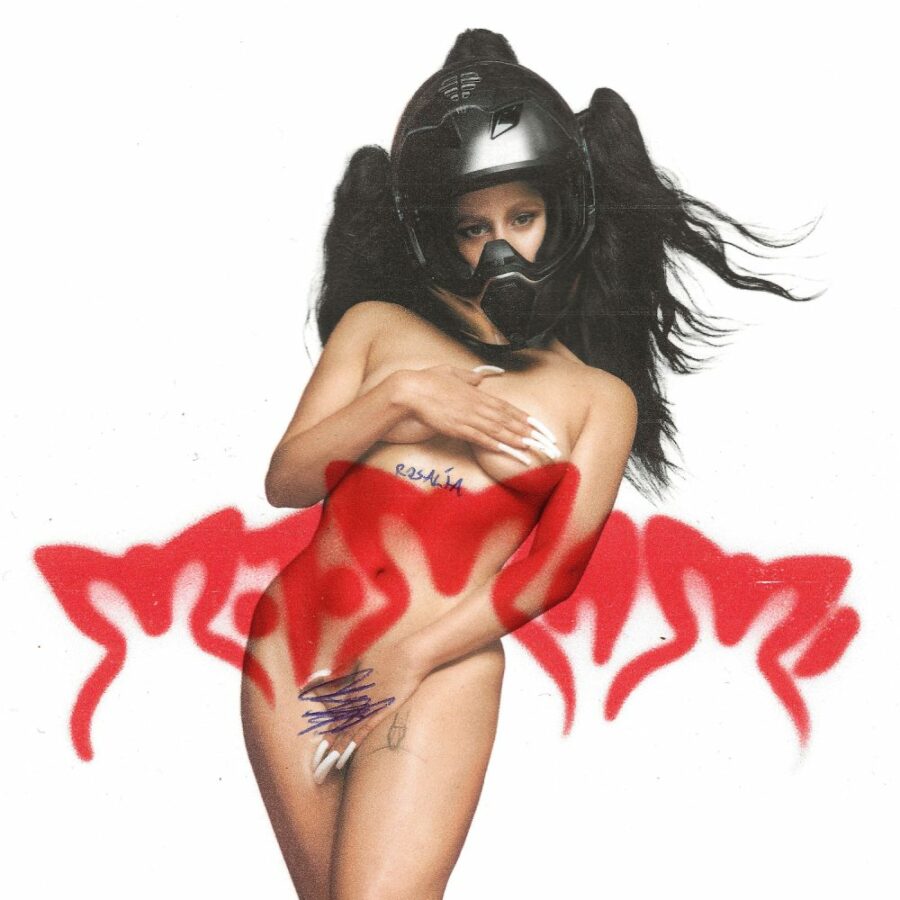In an interview with Rolling Stone, Rosalía stated that she envisioned MOTOMAMI as both a concept album and self-portrait. She chose the title to illustrate the two types of energy within the album – MOTO being the experimental and hard-edged side and MAMI being the personal and vulnerable. The title is apt as Rosalía depicts her life as a dual expression of grief and joy. On her new album, she appears more comfortable and confident in herself and opens up to display her life for all to see.
MOTOMAMI comes after a whirlwind couple of years for Rosalía. In 2018, she released El Mal Querer, which showcased her futuristic take on flamenco music by fusing the genre with experimental pop and electronic production. The album featured singles like “MALAMENTE” and “PIENSO EN TU MIRÁ” that immediately launched her into the mainstream. She followed this up with a series of commercially successful singles such as “Con Altura”, featuring J Balvin, and “TKN” with Travis Scott.
With two studio albums under her belt, a massive following, and a new major label in Columbia Records, Rosalía’s latest is her most ambitious project yet. The result is largely a departure from her signature flamenco pop in the form of a potpourri of fractured ideas that span genres from dembow to bachata and industrial to R&B. It’s organized in a mixture of sweeping ballads and hard bangers that culminates into an image of Rosalía as a musical innovator who doesn’t take herself too seriously.
The opener “SAOKO” is a blend of reggaeton and industrial elements that even features an Avant-jazz interlude. This combination of sounds fits into the theme of transformation and change. “Yo soy muy mía, yo / me transformo / Una mariposa, yo me / transformo.” (“I’m my own, I / transform / A butterfly, I / transform.”) The track exudes confidence as Rosalía warns others against pigeonholing her into any one category. Here, she expresses her excitement in constantly evolving in both her music and artistry.
These transformations also bring about clashes among different musical cultures. In her previous singles, Rosalía was embroiled in controversy when she embraced Afro-Caribbean sounds of reggaeton, bachata, champeta, and dembow despite her European heritage. MOTOMAMI was also inspired by these sounds with much of it recorded in the Dominican Republic and Puerto Rico. Whether one believes she effectively honors her influences or appropriates different cultures is up for debate, but her passion for the music is unquestionable. In the track “LA COMBI VERSACE”, she features Tokischa, a Dominican dembow artist, to pay tribute to the particular musical style.
In addition to Rosalía’s exemplary vocal delivery, the album features equally stellar production from collaborators such as El Guincho, Pharrell Williams, and Frank Dukes. One of the more subtle highlights is the ballad “HENTAI” with its lone piano accompanied by surprising drum beats that resemble gun shots. To highlight the album’s variety, this track is immediately followed by the playful “BIZCOCHITO”, which contains a hyperspeed and pitched interpolation of Busta Rhymes’ “Dangerous”. The most wild production is on “CUUUUuuuuuute” with its driving bass, rapid percussion, and distortion contrasted with piano balladry and Rosalía’s soaring vocals.
However, not all of these risks necessarily pay off. Although it was designed as a banger, “CHICKEN TERIYAKI” quickly gets repetitive and even overstays its short runtime, and the tonal shifts in “DIABLO” strip the song of any momentum, causing it to peter out by its end. Overall, MOTOMAMI consists of much shorter tracks with many shy of three minutes. While this allows Rosalía to explore as many sonic and lyrical ideas as possible, some of the tracks come across as undeveloped with a slight thrown-together quality.
Rosalía’s experiments with production allow her to communicate a myriad of different concepts. On the project’s lead single “LA FAMA” ft. The Weeknd, she tells a story about a troubled romance with fame. In “BULERÍAS”, Rosalía pays tribute to her inspirations such as rappers Lil’ Kim, Tego, and M.I.A. and flamenco artists Niña Pastori and José Mercé. She honors her grandmother and family in “G3 N15”, and in the closer, “SAKURA”, she delivers a stunning live performance that reflects on the beauty and fleetingness of life and stardom.
Advertisement
It’s difficult to find an artist so intertwined with the mainstream that takes as many creative risks as Rosalía. It’s even rarer to find one who does so unpretentiously and with a sense of humor. But this is what makes Rosalía special as a boundary-pusher. In the same interview from Rolling Stone, Rosalía talked about trying to find the emotion and energy at the core of her music. Rest assured, they are here in abundance.
Advertisement
